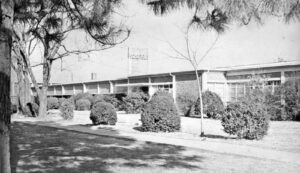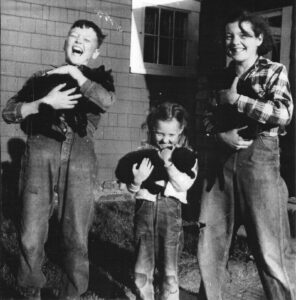Don’t squat with your spurs on. Will Rogers
U.S. Marshal Bass Reeves was good with his guns but he knew the danger of his job; death came to 130 of his 200 fellow marshals in Oklahoma. Once he took the job in 1875, he and his American Indian sidekick tracked down thousands of outlaws, including his own son, who was wanted for murder. Reeves used disguises to get close to his targets. After serving in the Indian Territory 32 years, he had killed 14 criminals and delivered more than 3000 warrants. Because he kept his identity secret and traveled with his American Indian companion, Reeves is thought to be the inspiration for The Lone Ranger.
Bass Reeves was one of the first black US Marshals west of the Mississippi.
A New Freedom… Maybe
When you think of the Wild West and cowboys, images from John Wayne movies come to mind. What Hollywood failed to show was that 25% of the 35,000 cowboys and lawmen between 1870 and 1890 were black. Many slaves had been trained to work cattle and lead drives before the Civil War. When white landowners went off to war, they entrusted their ranches to their slaves.
After the war, freed slaves were hired as cattle hands and cowboys as they migrated from other states to Texas. Their skills on the range were admired, but when they came into town they faced discrimination at restaurants and hotels.
Despite starting off with nothing and continuous oppression, African Americans made their mark on the settlement of the Wild West. History books and movie makers have not only ignored their contributions to the American West — they actually stole some of their history and made it a white man’s story. Black History Month reminds us to be intentional about seeking true and authentic stories about our past.
Overcoming Slavery for the Good… and Sometimes Bad
Born a Tennessee slave in 1854, Nat Love moved west to seek adventure when he was only 14 years old. He was hired as a cowboy for a large operation in Arizona and Texas, herding cattle and horses over the Rocky Mountains and Great Plains.
In his memoirs Nat wrote about surviving Indian attacks, violent hailstorms, and explosive gunfights. He described meeting Billy the Kid, Buffalo Bill Cody, Kit Carson, and Jesse James. He learned to speak Spanish while working with Mexican vaqueros. He wrote of the friendships made on the trail and the high caliber of his fellow cowboys. “A braver, truer set of men never lived than these wild sons of the plains whose home was in the saddle … They were always ready to share their blanket and their last ration with a less fortunate fellow companion. They assisted each other in the many trying situations that continued to come up in a cowboy’s life.”
Ned Huddleson was born a slave in 1849. As a bronco-buster, roper, and rider he earned the names Calico Cowboy and Black Fox. After the Civil War he rode down to the Texas/Mexico border area and worked as a stunt rider in a rodeo. Ned hooked up with a Mexican bandito stealing horses in Mexico then selling them in Texas. He later worked lawfully again by driving cattle through the West and mining gold and silver. In 1875, he had a stormy romance with a Shoshone woman, then joined the Tip Gault Gang stealing horses and cattle in Wyoming. One rancher had enough and chased the gang, killing all of them except Ned.
Ned changed his life style and name. He was now Isom Dart, a rancher who lived near Brown’s Hole in Wyoming in 1890. Neighboring ranchers were convinced he rustled their cattle to increase his herd size. They hired Tom Horn, an infamous bounty hunter, who ambushed and shot him to death in October of 1900. Residents of Brown’s Hole claimed that Dart was innocent and killed by ranchers who wanted his land. Others said it was the result of his stealing livestock.
Britton Johnson, a Tennessee slave who was moved to Texas, learned to read and write before getting married and having children. Johnson survived the Comanche raid at Elm Creek in 1864, but his son was killed and the rest of his family was kidnapped. He searched for them and gained their release after living with the Comanche in 1865.
After the Civil War Johnson worked as a cowboy and trail leader. In 1871 he was leading a wagon train near Salt Creek, Texas, with two other black cowboys when the Kiowa Indians attacked them. Johnson died in the shootout behind the body of his horse.
In 1954 Johnson’s story was written as a novel called The Searchers by Alan Lemay. It was later made into a movie by John Ford that starred John Wayne (who, of course, is white).
Stagecoach Mary
Tennessee slave Mary Fields was born in 1832 and worked for Judge Edmund Dunne after she was freed. After the death of their mother in 1883, Fields took the Dunne children to Ohio to their aunt, Mother Mary Amadeus. The following year Mother Amadeus was transferred to Montana where she became sick. Fields rushed to take care of her and the facility while she recovered, and was hired on as the forewoman.
American Indians called Fields White Crow because she “acted like a white woman but had black skin.” She packed a pistol under her apron and often toted a jug of whiskey. After locals fussed enough to have her evicted from the convent, Mother Amadeus helped Fields open a restaurant. She served everyone who ate there, whether they paid or not. Her generosity lost her the business.
In 1895, now over 60, Fields passed the test to become the second woman and first African American United States Postal employee — the applicant who hitched a team of horses the fastest won. Driving with a mule called Moses and a team of horses, Fields never missed a day of mail delivery. She was fondly called Stagecoach Mary. If the livestock couldn’t walk through deep snow, Fields put on snowshoes and carried the mail sacks on her back.
In 1901 she changed jobs for the last time, owning and operating a laundromat. She died in 1914. In 1959, Gary Cooper wrote in his article for Ebony, “Born a slave somewhere in Tennessee, Mary lived to become one of the freest souls ever to draw a breath, or a 38.”
Bulldogging
The son of former slaves, Thomas Jefferson Picket was born in Texas in 1870. He came up with a new method for steer wrestling. As a child he had watched a bulldog bite a wild steer’s upper lip; the bovine froze until the dog let go. Picket use this idea for steer wrestling. He would force the animal to the ground, then bite its lip while he tied the steer’s legs. Bulldogging evolved into a rodeo event, which earned Picket fame — and cost him a few teeth. The method was outlawed over concerns for humane treatment of the steers.
Picket was the first black honoree in the National Rodeo Hall of Fame.
Other black cowboys are:
:: Bose Ikard, who was the model for Deets, played by Danny Glover, in Lonesome Dove.
:: Amos Harris was Nebraska’s first black cowboy. Born in Galveston, he herded cattle up from Texas to the Chisholm Trail in Nebraska five times in 1878.
:: James Beckworth was born a slave in 1798 and later freed by his white father. He became a mountain man, explorer, and fur trader. When Beckworth moved from Virginia to the American West he discovered a pass through the Sierra Mountains that was later named after him.
Black history is American history.
Morgan Freeman






